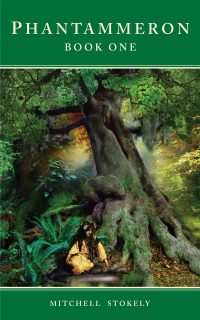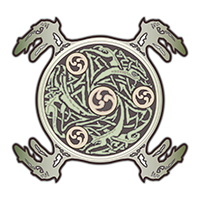The Joker, the Fool, the King’s Court Jester, Bugs Bunny, Loki in Viking Myth, the Native American Coyote, the Greek’s Prometheus, Forest Gump, and Sherlock Holmes are all Tricksters. But what is the Trickster, and why do Modern authors and filmmakers continue to blindly fill our entertainment with versions of the Trickster, while not knowing what or who this archetypal figure is? And what is the Mythological narrative behind this figure?

The Trickster is a part of our brains, an artificially-created, imaginary being summoned up from some strange part of ourselves. For none of the figures listed above are real but parts of story, myth, and legend we create in Myth and Modern Mythopoeia to sustain us.
We then ask ourselves, why write about and tell stories over and over about this strange figure?
A few years back I joined an online reading group where you improve your writing by having it reviewed. You then review others writing and offer advice. One of the things I read was from a young guy who was interested in writing a “trickster” story about a coyote figure. His story was interesting in that he had read some Native American stories and was trying to create a Modern version of their myths. Reading his narrative, I realized that the Trickster in modern story telling still served a need in our young people beyond sarcasm, condescension, stereotyping of history, teenage rebellion of authority, and slapstick in film. It must be a reflection of some rejection of the world by our youth. But the Trickster is in fact a very old trope universal to all of Mankind. It is something much more personal, a part of the Eternal Self, and a key to the experience of both Life and Death.
The Trickster in Ancient Myth
I’ve been interested in Native American myths myself, having collected several books on their stories. I had read the Norse Viking version of the trickster figure in the form of the God Loki, as well as the Greek version of Prometheus. It is then I had come to understand that the trickster is a universal archetype of the mind of Man; a being born of the mythological cycle of the God that steals fire for Mankind, or who is an arbiter of the medium between life and death, the savior of the world of men and Gods, etc. that traverses those two realms.
I had also read in the Prose Edda of the Vikings of a new form of trickster….the squirrel named Ratatosk in Norse culture that traverses the trunk the great World Tree of Yggdrasil and who conveys messages or gossip between the dark serpent of Nidhogg under its roots and the hawk of Vedrfolnir in its branches. These beings are like the neurons that convey messages between the conscious and unconscious brain; a universal being that travels between heaven and hell unharmed to translate meaning. This Western relic of the older animal trickster form in Viking Myths got me thinking again…what is the Trickster’s true purpose in our stories, in our society, and in our brains?
In the Native American Coyote we see this figure steal fire, as in many Euro-centric myths. But he often does many other stranger things closer to the European world’s tricksters that seems to have been lost, like take mortal women from the tribe and disappear into the underworld, or change animal shape and fool mortals into giving up their children, their fire, or even the shaman’s powers of life.
It’s then I realized that the Coyote Trickster, like the Norse version of the squirrel Ratatosk or Loki, was a purer trickster form representing something much more important psychologically to Humanity via myth than the washed over Gods of more recent Western or Modern story telling. These trickster animals were not just a representation of the Gods or a medium between those two worlds. What they really represented was a barely visible vision of our unconscious self……the trickster being the unfamiliar and strange image of our dead self or the dark self that we can never see or feel that laughs at Death and embraces some universality we all share. The Coyote or trickster then to me became the face of our unconscious that tricks death while also desiring it in war, a side of ourselves that copes with the representation of our rational life, embraces our living spirit, and yet laughs at the horror of the dire Reality we must face and of imminent Death every waking day of our lives. This being helps us survive and cope with our mortality!
This is why these animals or more modern God forms of the trickster, like Loki, cause so much trouble in mythological stories. The trickster forms the substrate of the universe that wills death but also defies it. It is that which wrestles with life within us, the universal battle of not just good and evil but the Selfhood of our psychology that deals with our death and the irrational absurdity of life itself and meaning and belief which it knows does not really exist. Facing meaningless life is death, death of the spirit and soul. The Trickster defies that death, beautifully. His comedy laughs it away. His irrationality chases it away.
And so, it seems, the story of the Trickster in modern and ancient cultures was simply a framework of the Self foisted upon us to survive. The Coyote or the Squirrel then appear to trip us up in story, to reveal the absurdity of not just the world and the universe behind it, but help us accept the darker world or the world of Gods and powers that lie above or below the daylight world of our lives.
The Trickster in modern entertainment in 2021, however, seems dead, overplayed, excessive, oblivious, and fallen. Many books and film overdo his role or deny it its irrational magic. If all is laughable and history is a cruel joke to be demonized as so many young people do today, then there is no meaning the Trickster, no purpose for his being. And so the search and struggle for any purpose erupts as but a comic farce or a morality play with consequences for punishment instead of enlightenment for the soul. That explains exactly what happened in 2020 with the marches, riots, and protests devoid of leadership or purpose. The Trickster has failed to teach. This explains the metamodern denial of history we see today in our youth. Too much or too little of the Trickster without older moral guidance towards our youth and so destroys the world!
But in our recent past the Trickster was seen as what he truly was…..a necessary evil, not to rewrite or deny history or punish people but to snicker at its “occasional” failed truths and force us to question, not the elderly but ourselves. The folly of youth was thus celebrated in past cultures. The Trickster, kept on perfect balance in the culture, was thus critically important. It because a teaching lesson.
We have seen this balance in past films done well. In Modern movies Jack Nicholson’s Joker in the 1989 Batman was just such a perfectly encapsulated Trickster figure….an evil villain but also a prankster; a balanced trickster we needed to strangely love unlike the excessively violent and angry Tricksters we now see today in books and film in 2021. We need the older trickster, but we also need evil antagonists. For evil exists, and it is a threat. The Trickster’s role was never to obliterate evil nor celebrate it. His role was to laugh on the sidelines but not admonish Evil’s destructive efforts which are real battles of the Self. Yes, the Trickster encouraged destruction, but never at the expense of the outside world, only inside the initiate.
Without the adequate modern Tricksters today, we have to look down into that vast unlimited raging sea that lies below the cliffs of our minds and look in awe and terror with no way to fathom it. We but fall into the pits of the self, unguided, as many of our young people are doing today. The comedian, the Joker, Loki, the Coyote all served a purpose as a medium between the hard realities of the world, not just life and death. The Trickster was boat between our inner worlds. For the Trickster lives only between the gulf of meaning and non-meaning. It helps us handle the conflicts of life and its inevitable dichotomies.
When the ancients threw in the story of Loki or Coyote it helped us cope with the two worlds of ourselves and connected them in their naturally unhappy marriage and made the two stable and manageable through the wild adventures of the trickster who was always causing trouble trying to undermine the universe and the Gods, laughing at life and death equally, and thus laughing at ourselves and yet something more that exists beyond us.
How to Write the Trickster?
This is why as writers we have to know what it is we are dealing with in our stories. What is this strange archetype we use in story and what is the hidden power of it and how can we use its secret purpose to enrich our own stories?
The Trickster in myth and story is a part of our minds, but also the cultural moment that lies outside ourselves. For unlike the Tragic Hero who redeems us or the dark nemesis that shadows our darker selves, the Trickster also represents disorder and chaos in the universe. He lies outside what I call the “Life Affirming” archetypes that fill our fiction and which are designed to elevate the will to live and the illusionary meaning and purpose of our lives they are designed to hide.
The Trickster resides in our minds in a place beyond the Id of our primitive needs, outside the Ego’s desperate search for purpose, and the Super-Ego’s authority over the world. The Trickster is the part of ourselves that lies beyond the Self in the world, in the dark waters of the unknown, the deterministic plane of the God’s that control us, and the chaotic Nature that surrounds us. For the Trickster waits for the Twilight of the Gods, the last days of our living self, the part of our brain that knowingly represents the death of the Self and how to laughingly cope with our own demise. For the Trickster will still be laughing as we take our last breath, but not at you, but at Death itself.
To fulfill that strange purpose, you will see great portrayals of the Trickster drive both the protagonists and antagonists in story towards their own undoing, breaking old laws, rebirthing universes through their own ends, subverting cultural norms, and twisting truth into believable lies. The Trickster’s purpose is to destroy the Self so it can be reborn in fire, to throw ashes at the Sun, to humiliate those who succumb to hubris, to laugh at Evil as at Goodness, and make dark humor of the dire fate of all life.
For we as Modern Humans in our unconscious – despite the honeyed veneer of our religions, societies, and wealth – know that Life and Living is an absurd act with no purpose or meaning. Survival bates us still in the modern world with all its complexities. And so the Trickster’s only purpose is to form an mythological archetype inside us to help us cope with the horror of all that, which is but Truth sublime. And so he/she serves that purpose admirably in story. And that is why we so readily laugh along with the Trickster and accept his strange purpose in story and in myth.
The beauty of the Trickster is that this global archetype is universal, and appears in cultures all over the world. And so it makes sense that the myth form some purpose in the minds of all cultures of homo sapiens through story.
Some examples: In ancient times the Trickster often appeared from the Other World to steal maidens or lead hero’s astray on paths through wood’s that revealed new treasures for the poverty stricken or stripped wealth from the greedy. In European culture the Trickster was often a God like Loki who in Norse legend would lead the Gods to their own demise in Ragnorok, or Prometheus who tricked and defied the God’s through theft. The more modern court jester of Kings evolved to challenge the aristocracy and show the foibles of leaders, keeping the King in check as we must diminish our own egos when we foolishly defy the will of others or of death itself. The Trickster is a personification of all these things.
In Modern times there have been many lighter versions of the Trickster. Bugs Bunny seems to have been the purest Trickster I can think of, who has no other purpose but to malign the anti-hero in cartoons. For the best Tricksters are always comedians. But more recently we have seen darker forms, like the Joker of comic book fame. However, their authors have failed to see that the Joker’s purpose isn’t evil or to lose before the hero, but to subvert both good and evil. In some films I have seen the Joker laugh at death but also do the absurd.
And so, in that role alone does the Modern Trickster trick our brains by subverting the constant Good vs Evil plays in our theaters and subsume his original purpose which was always to temp the Gods and have them destroy themselves by their own foolish motives.
If Modern Cultures are to survive, as a mythologist, I feel we must gain a deeper understanding and appreciation for the Trickster’s original purpose and Modus Operandi. Doing so we can stop recreating the same predictable Good vs Evil, Us vs Them political stories in books and film and return to more creative works where the absurd nature of the Trickster can live again. For he/she has no purpose but to sew doubt and destroy cultures so a new creativity can be born into them.
But through our brains alone does the Trickster work his magic. For the Trickster’s role is critical to the rejuvenation of not just our own creativity as writers and artists, but in the reimagining of our own Modern Culture whose own myths still entrap us. For history shows that the Myth of Meaning is what has sustained the world and kept Humanity thriving and alive, the same myths that we as Humans need to survive psychologically in modern culture and yet the ancient myths we need in understanding ourselves.
– the Author
Created Jan 3, 2017, 1:13 PM



